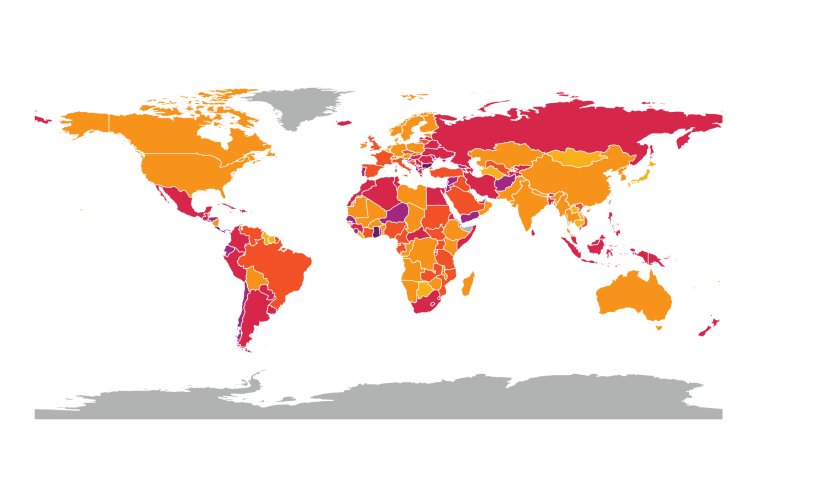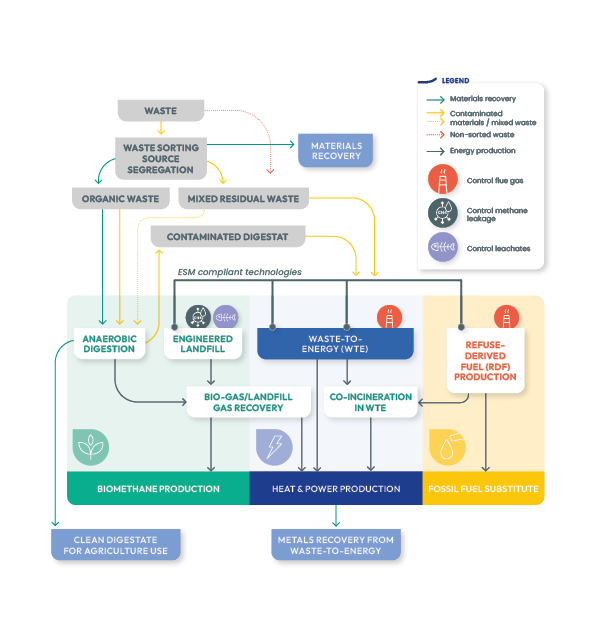Globally, the waste sector (including wastewater management) accounts for about 3–5% of total greenhouse gas emissions, according to UNEP and IPCC estimates. However, this share varies widely by country. In several island and small states, waste-related emissions can reach 20–30% of national totals. Among the 22 countries where such emissions exceed 15%, more than half are small nations. The highest shares are found in Costa Rica (28%), Ghana (23%), Bulgaria (21%), Eswatini (20%), Bhutan (20%), Georgia (18%), Jordan (17%), El Salvador (16%), Niger (15%), and Syria (15%).

There are three main levers for reducing GHG emissions from the waste sector:
Prevention
This first lever relies on resource-efficient consumption, eco-design, and the “8Rs” (refuse, rethink, reduce, reuse, repair, refurbish, remanufacture and repurpose).
Implementing this approach — which reduces waste generation — offers the greatest mitigation potential. Special attention should be given to food waste, to prevent emissions from unnecessary production and from its treatment, which can become a major source of methane emissions.
Managing Biowaste and Eliminating Open Burning
This second lever focuses on implementing waste management practices consistent with ESM, whose main objective — as defined by the Basel Convention — is the protection of health and the environment. It is estimated that nearly 40% of municipal waste generated worldwide is poorly managed. Landfilling waste in sites that do not apply sound construction and operation practices results in methane emissions.
Open burning or spontaneous fires at dumpsites produce black carbon — both of which have strong warming effects. Reducing these emissions represents a major opportunity for climate mitigation, while also protecting health and the environment.
Methane remains in the atmosphere for about 12 years and has a global warming potential 84 times greater than CO₂ over that period.
Because methane emissions have a strong short-term impact, actions taken now can deliver immediate benefits in slowing the warming trend.
Recovery of Recycled Materials and Energy from Waste
This third lever promotes waste treatment methods that avoid emissions which would otherwise occur through fossil fuel consumption in other sectors (e.g., industry, district heating).
Energy can be recovered from:
• Anaerobic digestion of organic waste,
• Biogas capture from engineered landfills,
• Waste to Energy plants (WtE), or
• Refused Derived Fuel (RDF) production.
This lever represents the final link in the transition toward a circular economy, but prevention will always remain the top priority for reducing not only climate impacts, but also pollution and biodiversity loss.

Enhancing circular economy
Enhancing circular economy is a means to conserve resources so that they can be used several times for various usages after their extraction (primarily as raw materials or, if not feasible, in the form of energy). Beyond being necessary to address planetary boundaries, circular economy can be, and must be designed to also reduce GHG emissions when producing needed goods.
Waste sector professionals’ role is to support all economic sectors by contribute to eco-design and supplying low-carbon raw materials and energy Waste sector professionals inform production processes that facilitate low carbon recycling and resources recovery.




